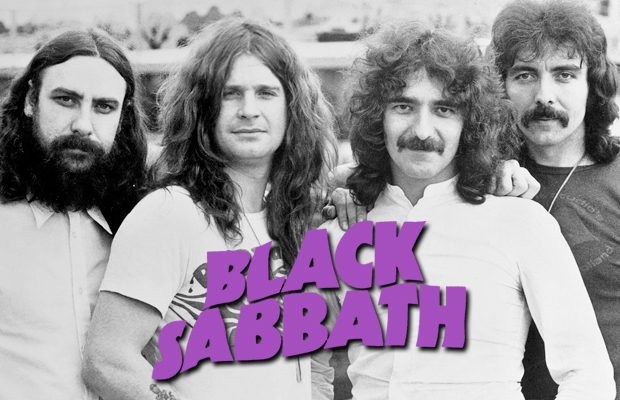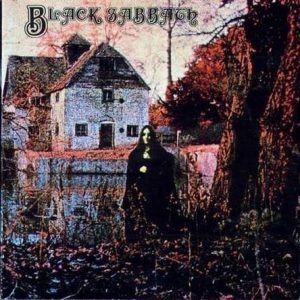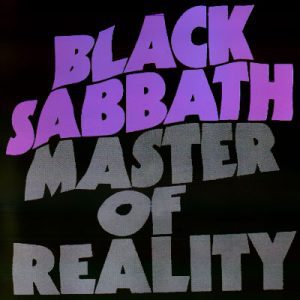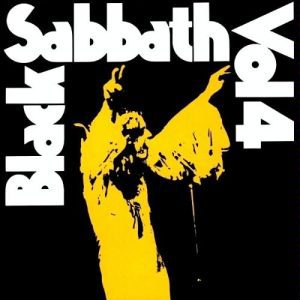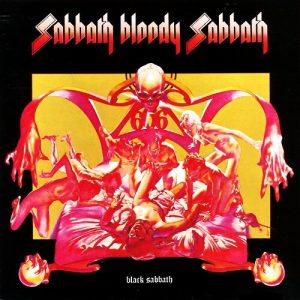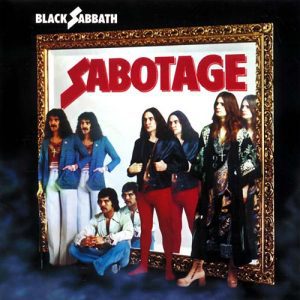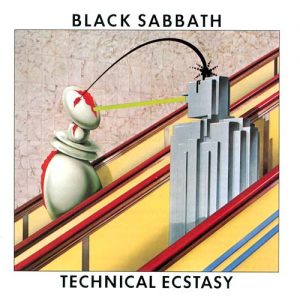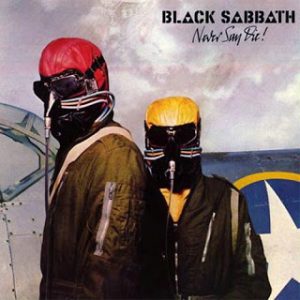Black Sabbath returns with a brand new album featuring the original trio of Ozzy Osbourne, Geezer Butler and Tony Iommi after 35 years ! Metalpaths goes back in time to remember the early years of Sabbath and all the albums with double “O” behind the microphone…by Kostas Tsotsanis
THE BEGINNING
Under the industrial atmosphere of Aston, Birmingham, they say heavy metal was born in the late 60’s. One group of people, Tony Iommi and Bill Ward, began dreaming of the creation of a blues-rock band, trying to avoid a pity career in the factories of their hometown. After a while, the two young fellas, found themselves in front of the door of Ozzy Osbourne, answering his ad; Ozzy zig needs gig! The trio, Ozzy on vocals, Tony on guitars and Bill on drums started the aura of the later Black Sabbath, adding Geezer Butler on bass guitar, a man who Ozzy already knew from Rare Breed, a previous band of Butler’s.
And so the story begins, with the four members naming their group The Polka Tulk Blues Band. Aston started getting high under the influence of the blues-rock the group was presenting in the local pubs, just to get a few beers for free. Jimmy Phillips and Alan Clarke were the two section musicians, who played along with Polka Tulk at the meantime. When the time was right, the band dropped their name and changed it for Earth, releasing the two session musicians too. Earth played in a promising number of gigs, until Tony Iommi quitted to join Jethro Tull as a rhythm guitarist!
However, the story doesn’t end here. Tony gets quickly frustrated, as he had to follow the orders of Ian Anderson’s and quits. Few days after, he comes back to join his previous band, giving his full soul to the project. While on tour in England, Earth changed to Black Sabbath, because of a namesake group. Black Sabbath’s journey to the metal hall of fame has just begun…
ALBUMS BLOODY ALBUMS
Black Sabbath( 1970):
On November of 1969, Black Sabbath went into the studio, recording their debut record. Producer of the album was Rodger Bain, the man who would produce their first three albums. The band closed themselves in the studio for just one day. The recordings lasted a few hours, as the band played their current live set and then went off to continue their tour.
‘Black Sabbath’ features eight songs, from which, two of them (Evil Woman, Warning) were covers of blues rock oldies bands, ‘Aynsley Dunbar’ and ‘Crow’. The sound Black Sabbath created back then was deeply dark, darker than everything created back then. They sounded energetic and alive, just like hearing a live album without the sounds of the audience. We also have crunchy, blues rock guitars and heavy drumming, even in songs like ‘Black Sabbath’, where the band creates an atmospheric horror soundtrack, based on the dream of a scary woman’s figure that Geezer saw.
Beside all these, the album features some other Sabbath classics. ‘The Wizard’ is a hit song, where Ozzy plays the harmonica, along with rhythm-driven riffs by Tony Iommi. ‘N.I.B’ is a song about the devil and his love about a woman, featuring an incredible bass solo in the beginning! Guitar solos, improvisations in drumming and awesome vocals create a diamond for every music lover and gives a strong kick-start to the career of Black Sabbath. Well, not as strong as in their second full-length…
“Black Sabbath” was released on Friday the 13th of February, 1970. The album’s cover is a woman dressed in black, the same scary figure the first song of the record describes. The group did not see the artwork until its release!
Paranoid(1970):
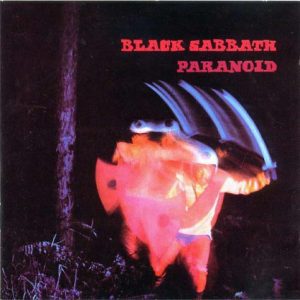
In the same year, Black Sabbath recorded one more full-length album. Having plenty songs to create another vinyl, the record “Paranoid” in June, always with Rodger Bain behind the glass wall. With the same materials (their love for heavy music and a large amount of joints), Black Sabbath deliver the album that would take off their career to another level, reaching US charts as well.
“Paranoid” numbers eight songs; “Paranoid”, “War Pigs”, “Iron Man”, “Electric Funeral”, “Fairies Wear Boots” are some of their titles. As we notice, this record couldn’t be better, with “Paranoid”, the band’s first single, to be recorded in twenty minutes, in the last day of records. The record company demanded one more song and Sabbath gave them a music punch below the belt. The songs are even more aggressive than in “Black Sabbath”, driving from heavy blues-rock sound, to a heavier one. Full of distortion, songs like “Iron Man” and “Electric Funeral” could easily destroy anything on their paths. The rhythm section (Bass and Drums) have better structures and are more into timing than in their previous record, and Ozzy’s voice is better than ever.
Tony Iommi also used some more guitar effects, such as wahs and delays. The riffs are unique, full of inspiration and catchy, a fact that helped the album spread in the music charts. The lyrics tell stories about social matters. “Iron Man” is about a man that sees the future of the planet but while he travels back in time to tell humans, they turn against him, forcing him to destroy humanity. “War Pigs” is about the war in Vietnam and about peace, while “Electric Funeral” tells about environmental concerns.
The record’s artwork shows a pink soldier in motion, based on “War Pigs”. However, the record company wanted the album to be named after the single, and so “Paranoid” is released on September of 1970. Music critics disliked both “Paranoid” and “Black Sabbath”, without being able to damage the band though.
Master of Reality (1971):
After the release of Paranoid, Black Sabbath went touring worldwide, while their fan base was growing bigger and bigger. The band was popular in US and England, creating myths about them being Satanists and occultists. A large amount of cults followed them on the road, making rituals outside the clubs Black Sabbath played. Of course, the band had nothing to do with it; they were just a bunch of heavy drinkers from Aston. Drugs were a major factor of the group by that time, with its members consuming a large amount of illegal medicine, weed and every kind of drug was able to find. Under those circumstances, ‘Master of Reality’ was recorded in London.
Tony Iommi down-tuned his guitar, producing a heavier, bass sound. As a result, “Master of Reality” and their next album would be the birth of the early elements of stoner metal, putting the seeds for a large amount of groups to harvest later. “Into The Void” is one of the most trippy songs the band ever created, with hippy crafted riffs and a great bass sound. There’s also “Children of The Grave”, Ozzy’s personal favorite Black Sabbath song till today! There are heavy metal guitars and “dizzy”, high- pitched vocals, ideal for headbanging heavily.
There are also some fillers in this album, like “Embryo” and “Orchid”, where Tony Iommi uses clean guitar tone to lighten the atmosphere. For the very first time, he also uses flute and orchestral parts. “Solitude” is an example of the experimental mood of Iommi during that period. It also features soft vocals by Ozzy, even if fans firstly thought it was Bill Ward the vocalist of the specific song. Master of Reality was released on July of 1971, unfolding the carpet leading to Vol. 4 and an addictive lifestyle…
Vol.4 (..To the great Coke-cola company of Los Angeles, 1972):
And so here we are! To the most explosive music album of the 70’s! Black Sabbath, in 1972, traveled to Los Angeles, renting a house in Bel Air. Los Angeles was the right place to record an album like this, because of the city’s lifestyle mostly. During the writing of the album, the band was so deep in coke that it’s actually quite remarkable how they are still alive till today. However, they managed to write powerful songs, and an unimaginably good record.
Vol.4 is the first Black Sabbath record in which Rodger Bain is not the producer. The band produced the album along with Patrick Meehan in L.A. Black Sabbath continues the heavy, stoner guitar sound of Master of Reality through Vol.4, being a bit more experimental as we could say. As a result we have songs like ‘Changes’ and ‘Laguna Sunrise’. In ‘Changes’, Tony performs a great piano melody, while Ozzy sings with a melodic soft voice while ‘Laguna Sunrise’ is an acoustic one.
On the other side, there are songs-trademarks of Black Sabbath in this album. I’m talking about “Tomorrow’s Dreams”, “Supernaut” and “Snowblind”. The lyrics are mainly about drugs, while Sabbath use slow and heavy riffs, followed by fast and aggressive ones. Frank Zappa once said to Ozzy that ‘Supernaut’ is one of his favorite rock n roll songs because of the energy the listener feels and the band transmits. While thinking about this, I also feel that Vol.4 is all about energy, partying and flying to the skies! There’s a lot of rhythm in songs, just like in the earlier rock albums of 70’s, totally different from the band’s first album ‘Black Sabbath’.
From this part and on, the career of Sabbath passes to another level. Tensions between the band’s members are created, mostly after ‘Sabotage’, and experimental (less-heavy and rocking) albums like ‘Sabbath Bloody Sabbath’ follow up.
Sabbath Bloody Sabbath ( 1973):
After the success of Vol.4 and a successful tour, Black Sabbath returned to California for a new record. They tried to write some new material but they couldn’t get it going. Band’s guitarist and main composer of the songs, Tony Iommi, was unable to produce new songs that would satisfy the band and the audience. Black Sabbath needed to get some new ideas and some time to relax. As a result, they rented Clearwell Castle in England. Clearwell Castle is a big gothic- style castle. Black Sabbath stayed there for a while, rehearsing in its dungeons. As Ozzy Osbourne mentions in his autobiography, the atmosphere inside the castle was taken out of a horror movie. The band’s members did pranks on each other just to scare and thrill. During that time, Tony Iommi played the main riff on ‘Sabbath Bloody Sabbath’ and inspiration came back!
The group quickly wrote new songs and recorded them in Morgan Studios. “Sabbath Bloody Sabbath” finally took a form. The record numbers eight songs. Its music style is quite lighter for a Black Sabbath record, with the use of keyboards and synthesizers. Their use was visible through previous records, but in Sabbath Bloody Sabbath, the band dabbles in new sound a little bit more. “Who Are You” is an example of that. Moog Synth is used as the main structure of the song. “A National Acrobat” is another one with lighter sound, soft and melodic vocals and more ‘folk-lore’ guitar riffs.
“Sabbra Cadabra” is a heavy one, just as if it was taken out of “Master of Reality”. It features keyboards effects, under some heavy stoner riff, while Ozzy sings about love. Its main riff is fast and with complex changes. We also have some acoustic songs just like Sabbath use in their studio albums ( “Fluff” and “Spiral Architect”). The album brings out a 70’s rock vibe, with “Sabbath Bloody Sabbath” and “Killing Yourself to Live” standing out as radio hits.
“Sabbath Bloody Sabbath” became one of the best Black Sabbath record, released with one of the best artworks of heavy metal. It features a man sleeping in a bed, while dreaming of a Sabbath devil above him. On the back cover, the man just sleeps with angels above him.
Sabotage (1975):
It was about the time where the band was starting losing their motivation for records. They were all into drugs and alcohol, things that were messing up with their ability to create and think. Ozzy Osbourne and Bill Ward were the two members who were addictive to everything they could swallow or smoke or sniff, while Tony and Butler were trying to control themselves and the band too. In the meantime Ozzy was starting to question the future of the band and Tony’s work as the main composer. Under those circumstances, “Sabotage”, “Technical Ecstasy” and “Never Say Die!” were recorded. But let’s focus in “Sabotage”, the band’s sixth studio album, which name reveals the band’s opposition to manager Patrick Meehan.
“Sabotage” is heavier than “Sabbath Bloody Sabbath”after Ozzy’s demand. The band recorded some of their classic hits like “Hole In the Sky”, “Symptom of The Universe” or “Am I Going Insane (Radio)”. “Symptom of the Universe” has one of the best heavy metal riffs at all time (yes it is!) and shows a strong Black Sabbath, less technical and back to the roots. The band wanted to play fast and heavy, recreating some doom classics just like they did a few years ago.
However, we find songs like “Supertzar” or “Am I Going Insane”, which differentiate from the others. In “Supertzar” we find choirs and orchestras. We can consider it as an atmospherically rock song, influenced by Queen for example. “Am I Going Insane” features keyboards and a lot of piano add-ons. The record closes with “The Writ”, where Ozzy Osbourne wrote the whole vocals himself, without the help of Geezer Butler, after a long period of time. “Sabotage” got released on July ’75. After the release the band went on tour with Kiss. The tour ended shortly because of the injury of Ozzy Osbourne while riding a motorbike.
Technical Ecstasy (1976):
On 1976 Black Sabbath started jamming new songs about their upcoming record. Under the lead of Tony Iommi, the band changed their sound slightly. Tony wanted the band to approach a more appealing to the audience sound, the one of 80’s hard rock which was about to become popular. Easy-listenable songs, long guitar solos, lyrics about women and wild lifestyle were some of the elements a band needed to hit the radio programs and become popular. Ozzy was against this change, wanted to pursue a solo career. However, he stayed on the band.
Technical Ecstasy is all about the above elements. Catchy songs, with long guitar solos and heavy ones. We have a hard rock feeling combined with heavy metal guitar riffs and keyboards where it needed. Ozzy sings harsh and with high pitch vocals. ‘You won’t Change me’ is one of the best songs of the album and a strong example of the structure Sabbath used for their songs in ‘Technical Ecstasy’. We have blues-rock solos by Tony and a keyboard’s backing track. “Gypsy” actually sounds more like a song out of Ozzy’s personal records and “It’s Alright” is a piano ballad, where Bill Ward did the vocals, for the very first time in Black Sabbath’s history.
Another beautiful ballad is “She’s Gone” where, while I listen to it, I find myself thinking of another song, “If I Close My Eyes Forever” (By Ozzy and Lita Ford). “Rock N Roll Doctor” and “Dirty Women” are some other rock hits and extra-catchy songs, which became popular during that time.
Overall, “Technical Ecstasy” is an excellent record. However it isn’t something that a Sabbath fan expected. As a result the album got mixed reviews by the music critics. The band has abandoned their doom character for sure. The album’s cover is horrible too, illustrating two robots having sex. After the release, Ozzy Osbourne left the band for three months, in order to bury his dead father and work things out with his personal life.
Never Say Die! (1978):
After the release of ‘Technical Ecstasy’, Black Sabbath traveled to a studio in Toronto, where Rolling Stones have recorded a live album, for their next work. During that time, Ozzy was unable to sing or record like he did before, because due to substance abuse. However, he managed to record the vocals at last, without liking the compositions the other band had written. He stated, later in his autobiography, that, “Never Say Die!” was an awful piece of work and that he hated it.
“Never Say Die!” actually sounds like a band breaking apart. You can hear the bad chemistry between the members throughout the songs. We have some songs like “Junior’s Eyes” or “Never Say Die”, which managed to stick out of a middling album. The main songs have heavy riffs, down-tuned guitars and plenty orchestrations. The band slightly differentiates from their last album again, trying to find a heavier character, but losing it in the end. “A Hard Road” is another good one, with the band singing all together the choruses (possibly because of Ozzy’s inability to work out the second vocals alone). Furthermore, Bill Ward sings in the last song of the album “Swinging The Chain”.
The album was released on September of 1978. Slightly later, the band decided to fire Ozzy Osbourne, after him missing concert’s shows because of the drug addiction. And this is how the Ozzy era of Sabbath ends. Black Sabbath hired Ronnie James Dio, to begin something new, a new era under the label; the Dio years!
THE LEGEND:
Whatever people may think about Sabbath without Ozzy, his timeline with Sabbath was one of the most influential in music history. Black Sabbath has not only created legendary music records, but they put the seeds for heavy metal to unfold the next few years. A large number of bands made covers by the Ozzy-period of Sabbath and listed it as their influences.
Moreover, Black Sabbath helped creating another large music genre; stoner rock! Stoner rock used Sabbath’s one- step down tuning, the dizzy and smoky vocals of Ozzy, as well as the heavy blues guitar riffs. Tony Iommi and Geezer Butler became symbols, while Bill Ward’s drumming (‘let’s say Fuck you metronome and time’ style) became matter of study to a lot of drummers worldwide. Heavy metal and rock would never be the same without the original line-up of Black Sabbath. The devil’s music is their legacy.
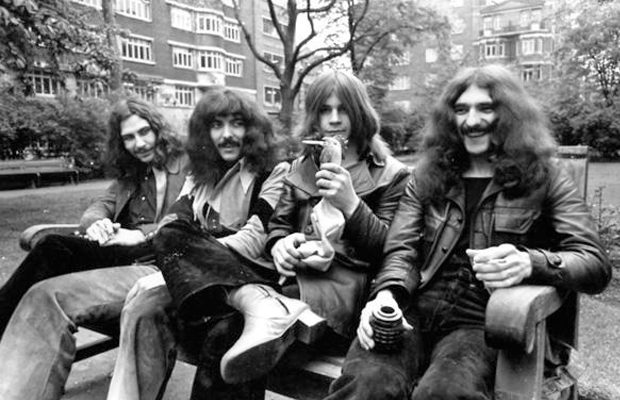
On 2012, the original line-up, without Bill Ward, walked into the studio to create another music album after all those years… It’s title is “13“… And so, the legacy continues, and darkness appears to cycle this world… Sabbath is back!

